Clark Lake’s Dick Cochran passed away in 2021. We may never know why he became interested in the Chris Craft Barrel Back speedboat. But something inspired him. He gathered details of the 23 foot classic and built a model of it. Dick finished the multiyear project in 2012. That’s documented by a post-it note left in the bilge of the model. (To read Dick and Ruth Ann’s Clark Lake Story, please click here).
Dick spent hours meticulously measuring every inch of the only Chris Craft Barrel Back nearby – the 17 footer belonging to John Calhoun, who lives on Oakwood. So Dick had to extrapolate from his measurements, the extra 6-feet. That extra length allowed for a third seat. Once Dick finished the boat and had admired it for awhile, he gave it to John. John thinks that he became the recipient because those close to Dick didn’t share the same fascination.

From about 2012 on, the 23-foot replica graced John Calhoun’s office at the Columbia Township Hall (John is the Township treasurer). Learning about the Clark Lake Spirit Foundation’s interest in preserving Clark Lake’s past at the Community Center, John believed the time was right for the replica to find a forever home. Thanks to Flip Reynolds who mounted it, the boat is now on permanent display as you can see in this photo.
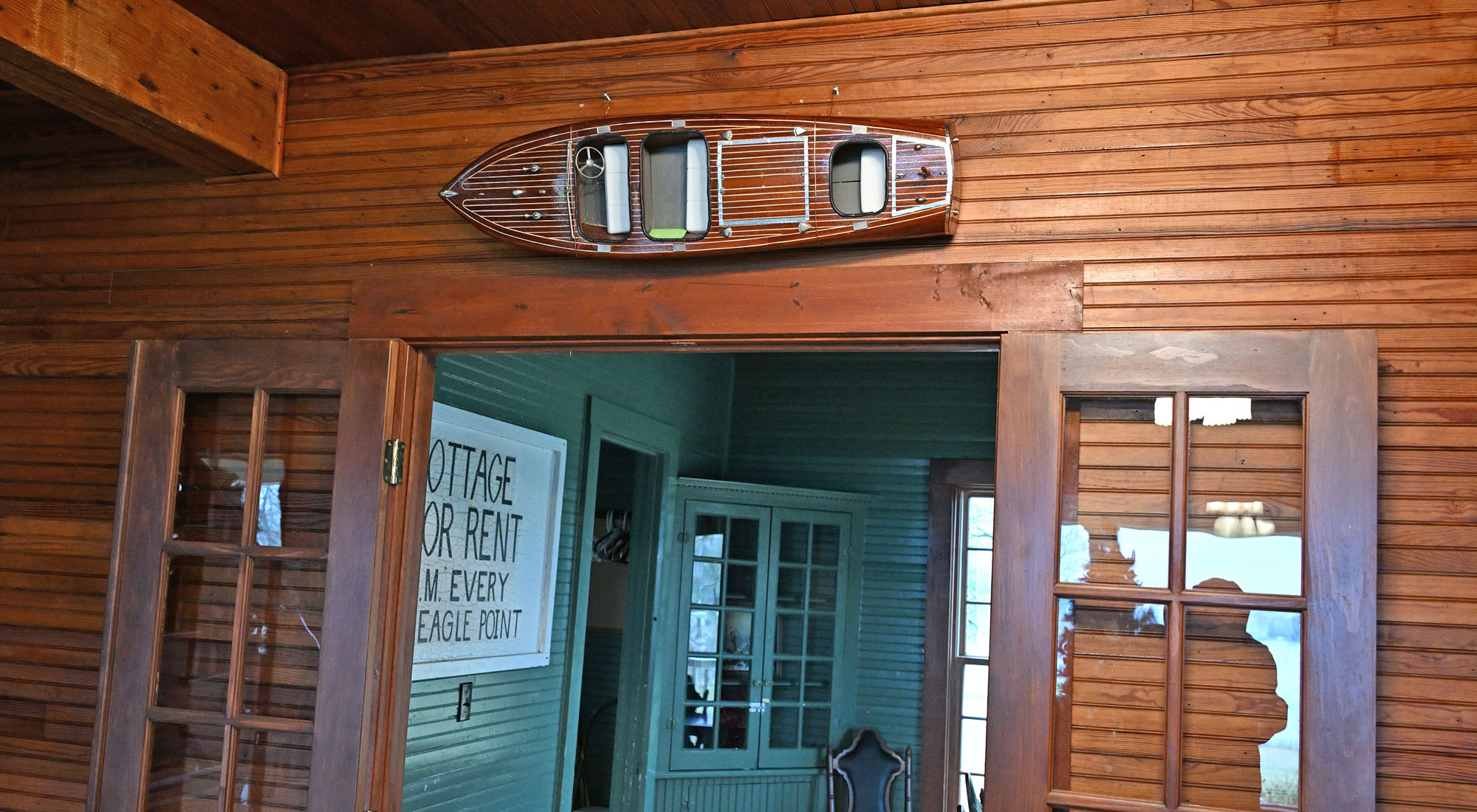
The detail is precise, right down to the instrument panel, gear shift, lights and other amenities. The building process must have been challenging. Crafting the barrel back shape must have taken not only expertise, but extraordinary patience and care. Bending wood for a replica, or the real thing, requires steaming the wood and molding it.
The manufacturer described the boat as the Double Cockpit Forward Custom Deluxe. Because of the shape, it acquired the name Barrel Back. This model came in three lengths – 17, 19, and 23. In all, 472 were built between 1939 and 1942. Production ended as World War II began. After the war, Chris Craft introduced a new design. Only 75 or 80 of the original Barrel Backs survive. They have become rare classics.
John Calhoun’s boat was built in 1939. For 50 years, it had been located in Wisconsin, where he rescued it and brought it to Michigan. Restoration began at Portage Lake under the guidance of Mark McIsaac. John made many trips to the location before the boat graced Clark Lake. As you can see, the restoration began with no transom, bottom and half the hardware missing, as well as a seized 60 hp model B Chris Craft engine.

His restoration took four years. In this slide show, you can see the steps to completion.
These show the barrel back framing being replaced as rot had done the original one in.
While the boat was flipped for the transom, the bottom was replaced using Okume plywood covered in 3-M 5200 flexible sealer. Then 1/2″ Honduran mahogany planks were laid over to create a “no soak” bottom. That meant you would never have to wait until the boat swells the bottom planks together before you use it. When completed and the planks were secured with the 1,700 silicone bronze screws, a plastic vapor barrier was placed over the bottom to help cure the 5200.
Once the bottom cured, the boat was flipped for work on the topsides. The bottom was painted prior to this as it’s easier to apply. Cockpit wood replacement was next with hatches and decking battens installed. Fairing the planks after steam bending the 1/2″ 6″ mahogany planks allowed the boards to be bent around the tumblehome and attached to the barrel stern.
Once the cockpit and engine hatches were measured and completed, the boat was sanded numerous times to fair the planks and to prepare for staining. Stain was applied to the boat and rubbed into the wood surface and allowed to cure for 72 hours. To achieve the mirror like finish, 17 coats of Epifanes varnish were then applied. The first three were build coats to seal the stain, with no sanding in between. From the fourth coat on, sanding between each application eliminated imperfections. Steering wheel, hardware and engine instruments were mounted. At last, the 131-hp KBL triple-carb flathead six was installed, and the rudder and prop shaft were aligned.
John points to the no-soak advantage of applying the 3M material between the two hulls. Original woodies were outfitted with canvas between the bottoms. Over time, the canvas was subject to rot and no would longer protect the boat. A boat with faulty canvas could sink in minutes.

Above, two of the five wooden speedboats owned by John. He says the quest started when he attended the Hessel Boat Show in the late 1990s. “I just fell in love with the classic lines and ingenious inventions that were created by Chris Smith and Gar Wood, two competitive boat builders and racing legends. They bought up all the surplus Liberty aircraft engines after WW1 and crammed them into 28 to 35-foot missiles. That was before the EPA and OSHA!”
In 2018, John offered a day’s use of his classic boat as a silent auction prize. Phil and Christine Wier won it. In this short video titled “Forever Clark Lake,” you will see the Wier’s enjoy the prize. As they round the Point, they encounter a surprise.
John accompanied the Wier’s in the boat and recorded the video, and then asked this website to edit it.

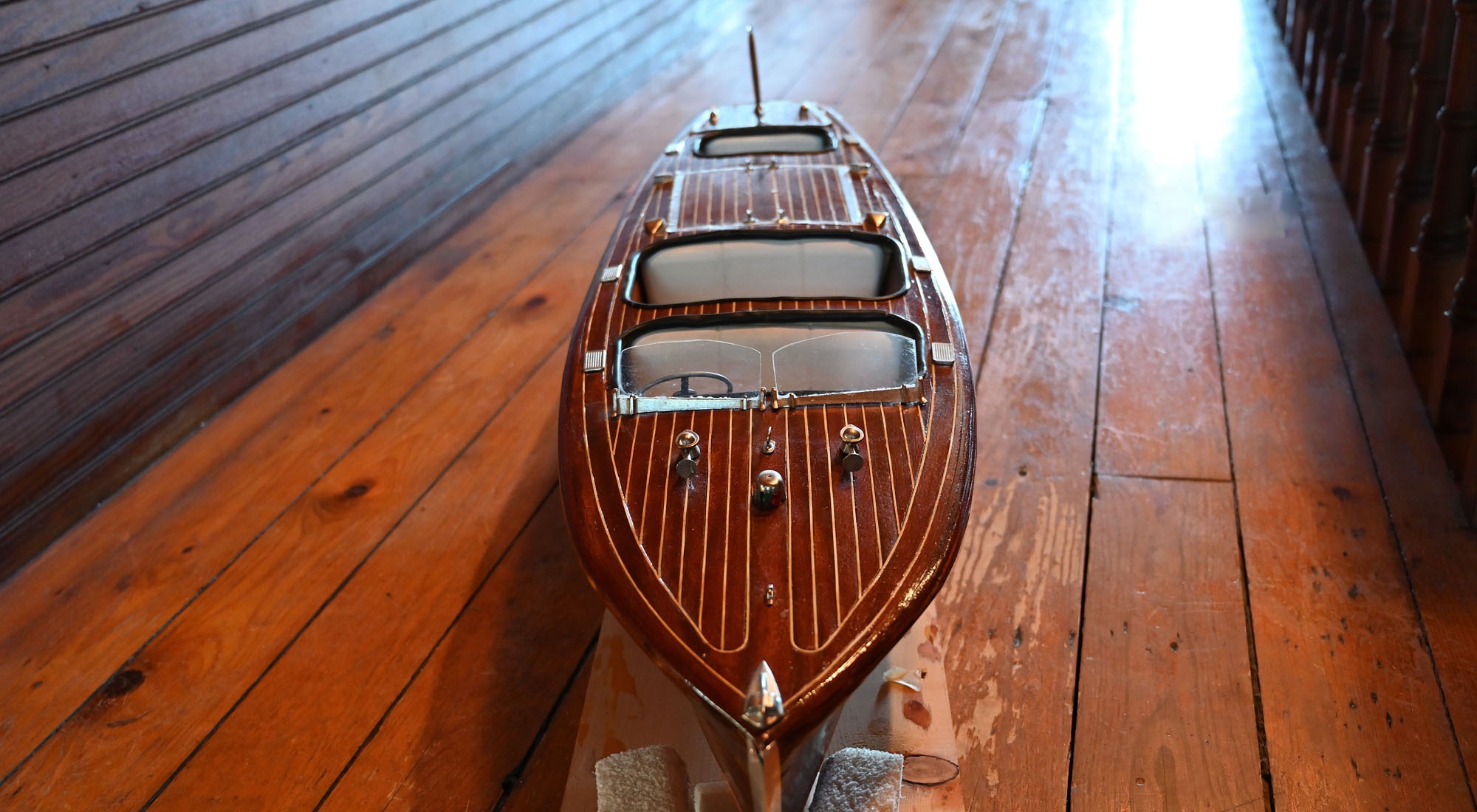

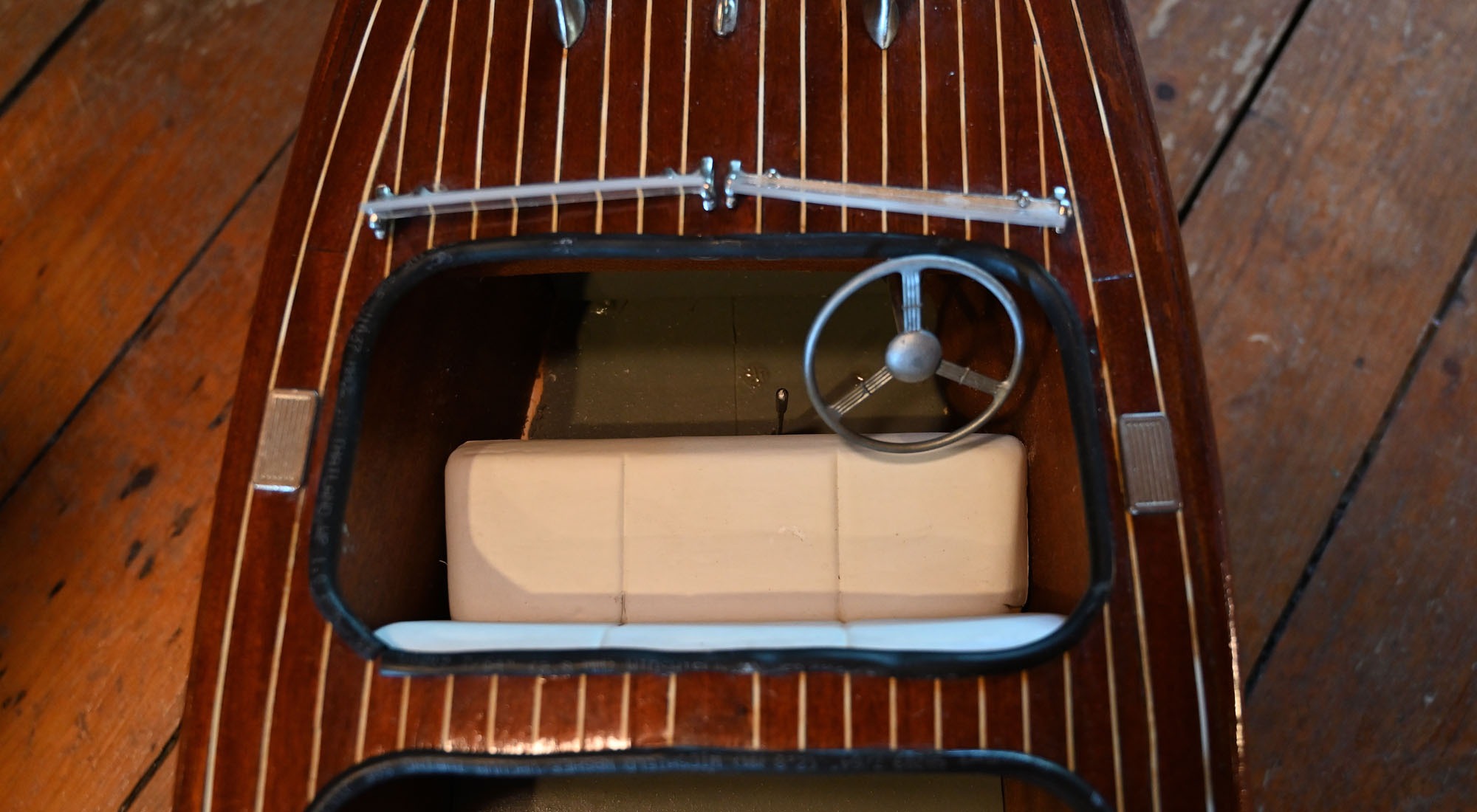


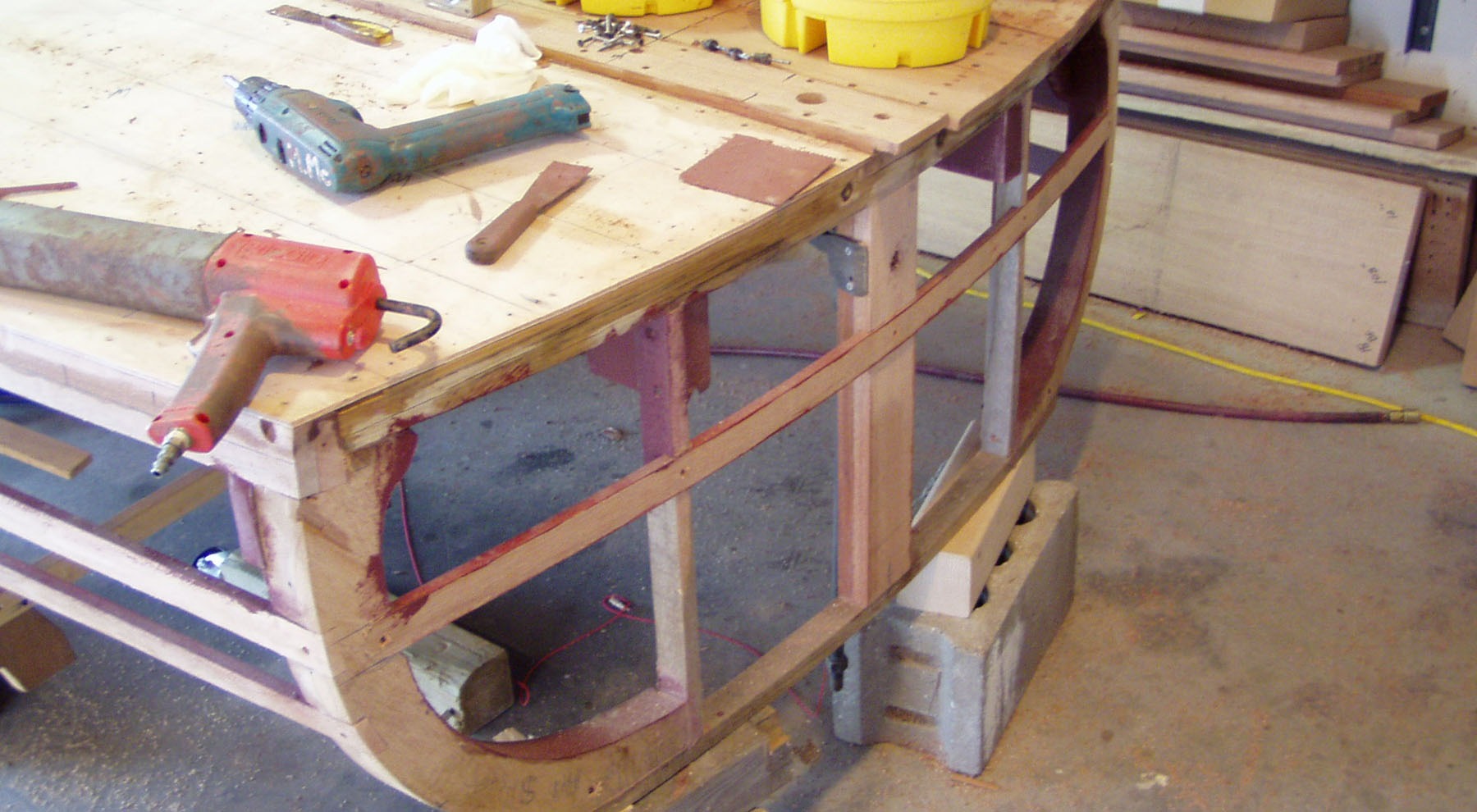
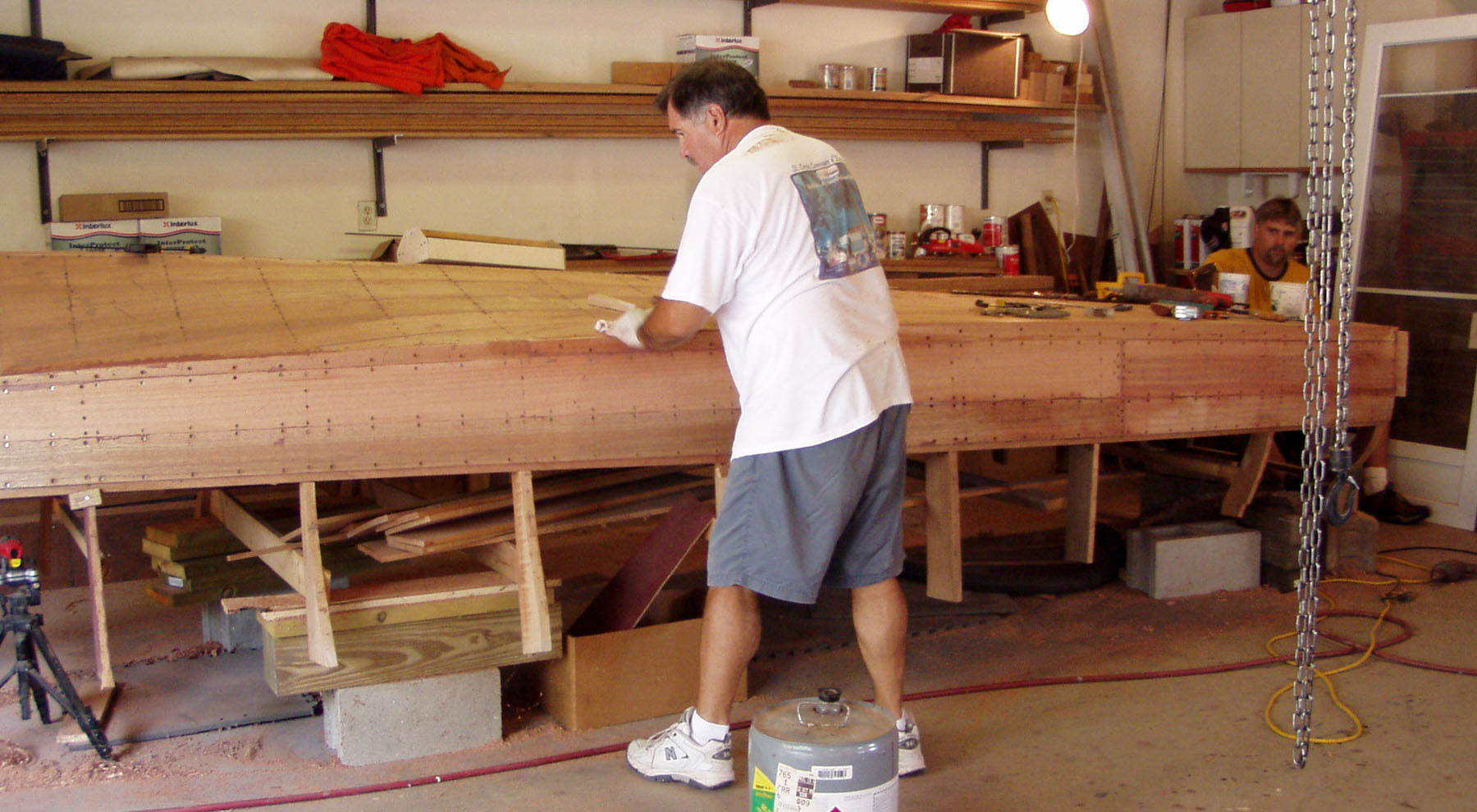

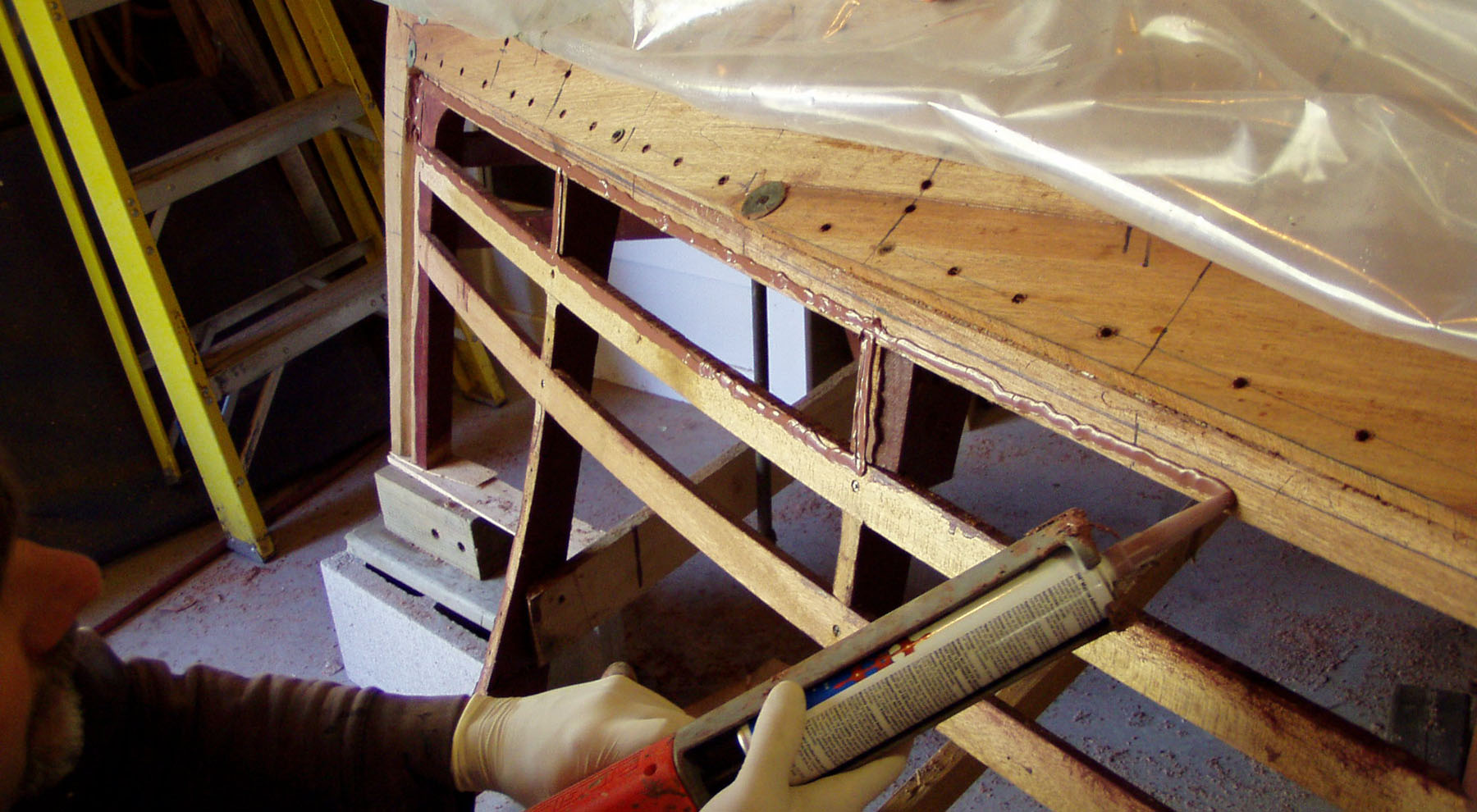

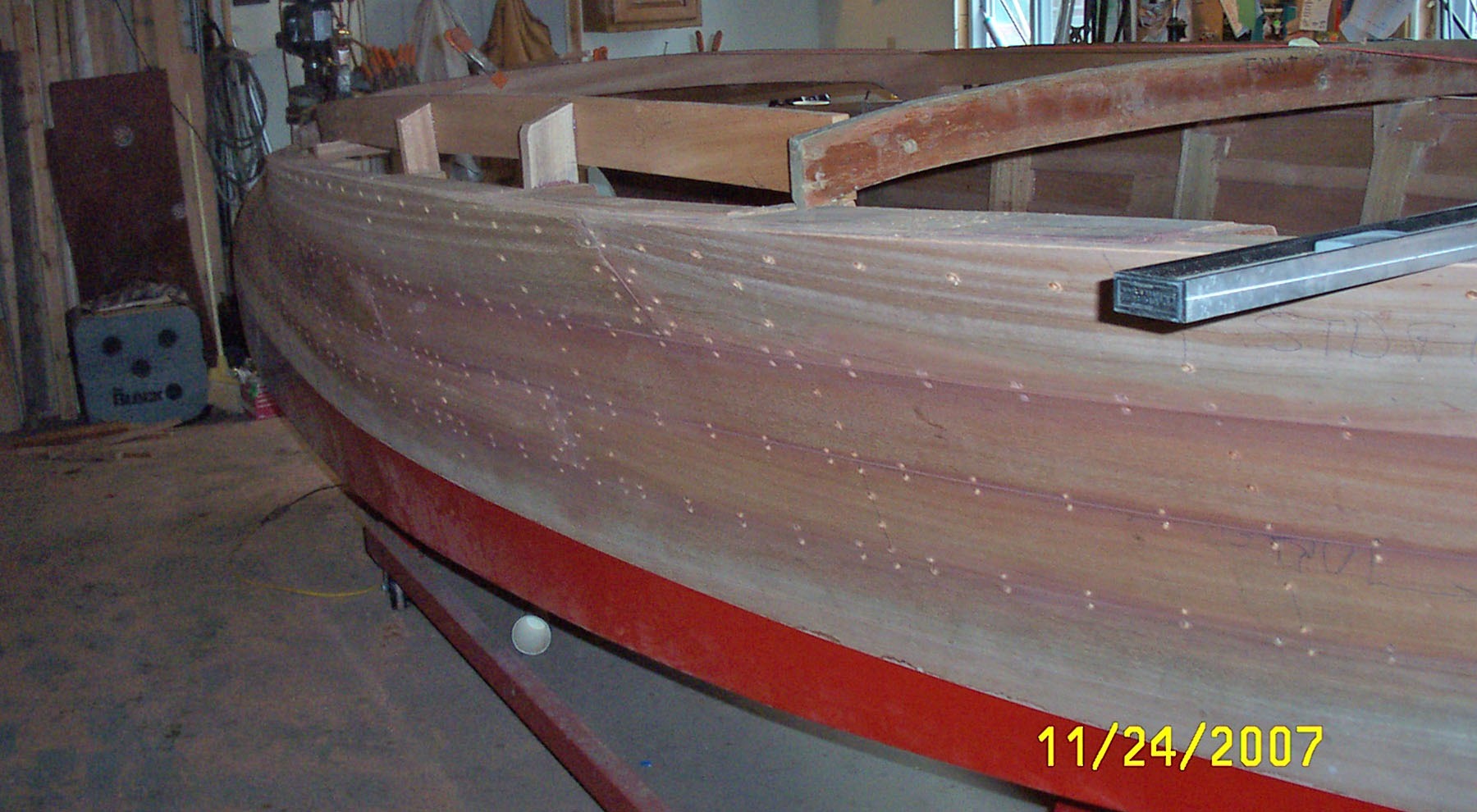




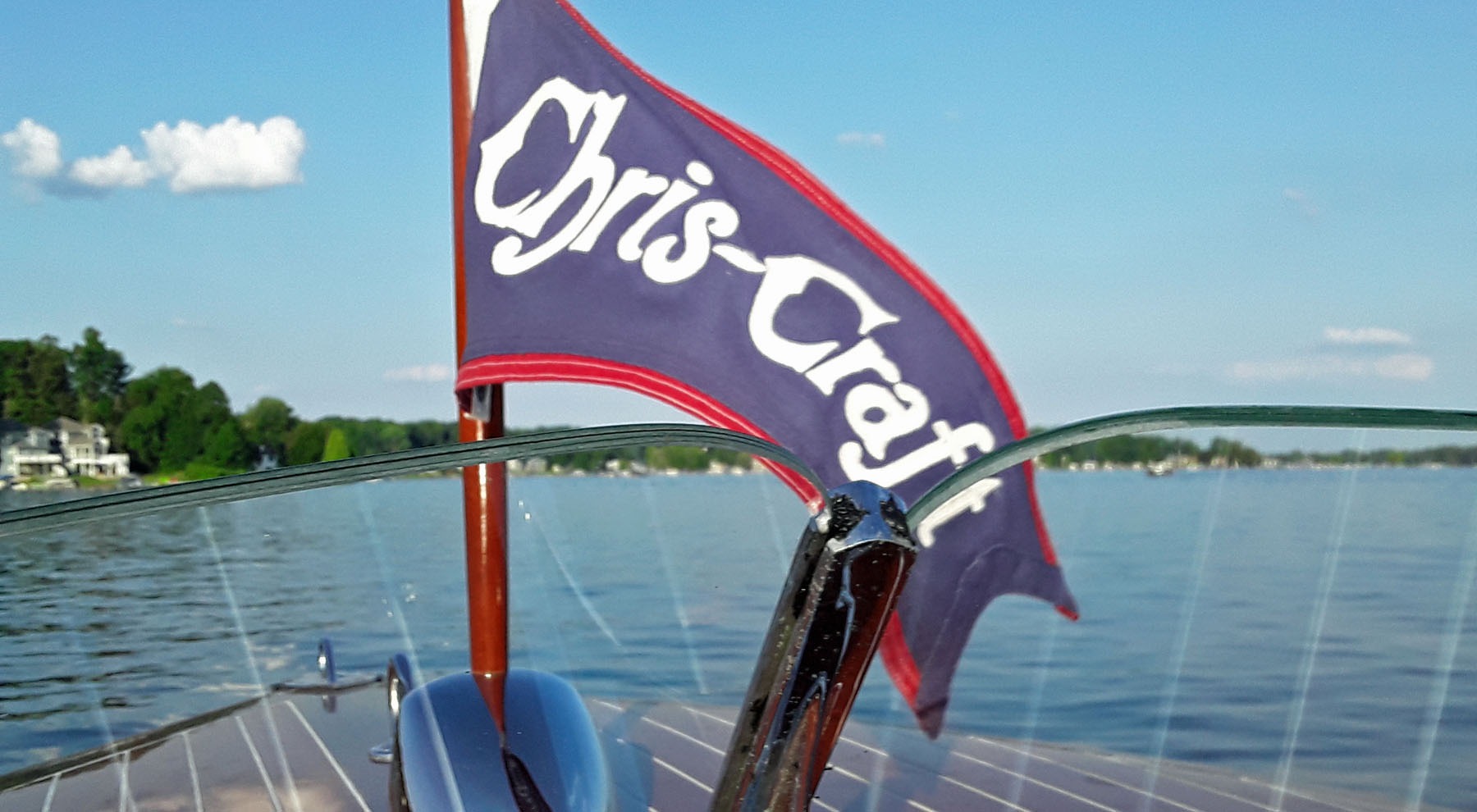
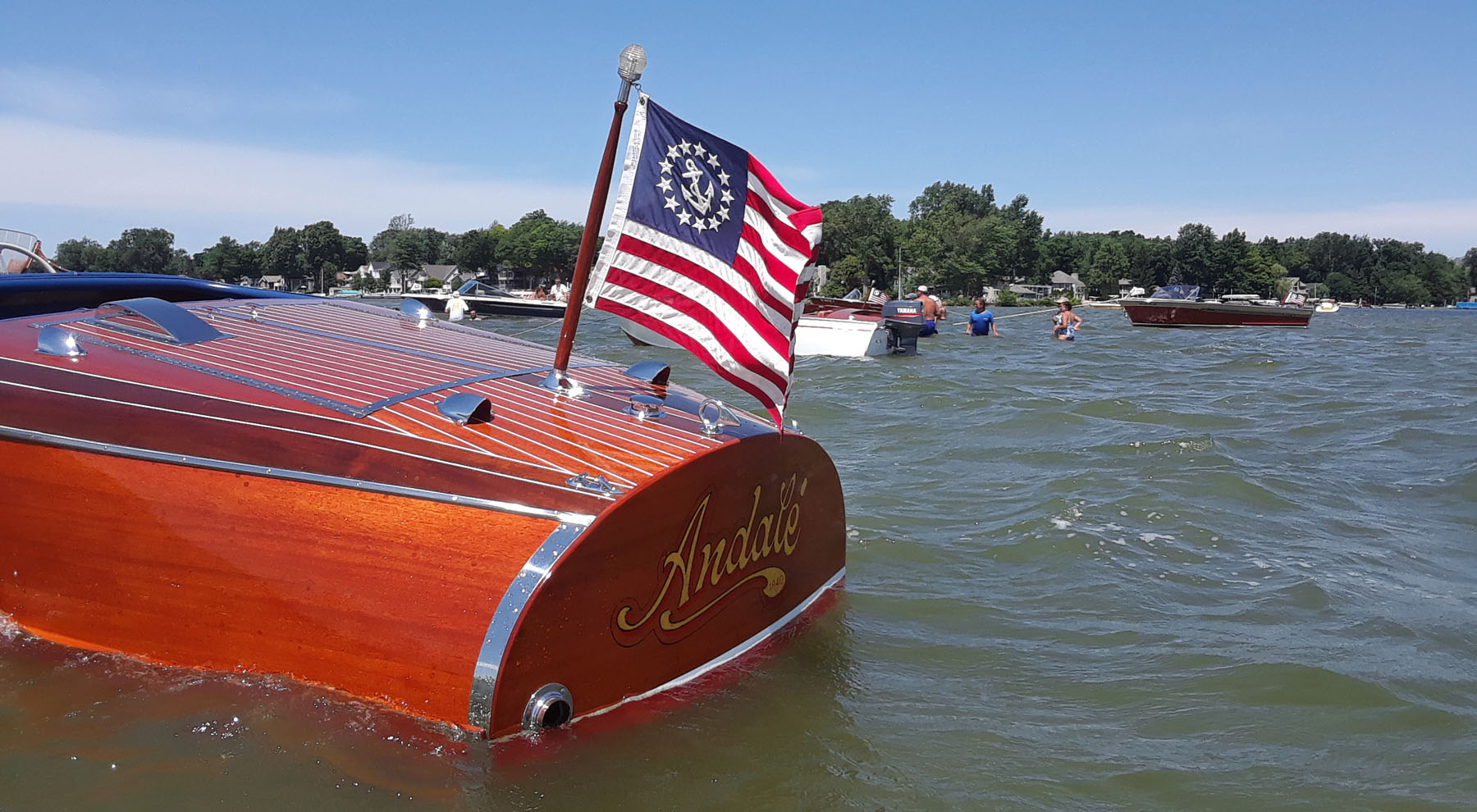













Great story and video!
Thanks for this story & video!
My grandparents bought their Lakehouse in ‘41 & waited until after the war to buy their wooden ChrisCraft when they started building boats again.
Great story and vid! Have many times passed by Andale at her dock on Oakwood and gazed enviously at her beautiful lines and gorgeous finish. Thanks for bringing her to life!
Great article Rick! Andale’ turns 84 this year and should make it long past 100. Not bad for a boat originally designed to last five years. The name translates to “hurry up old man “ in Spanish.
Great story about a beautiful boat.